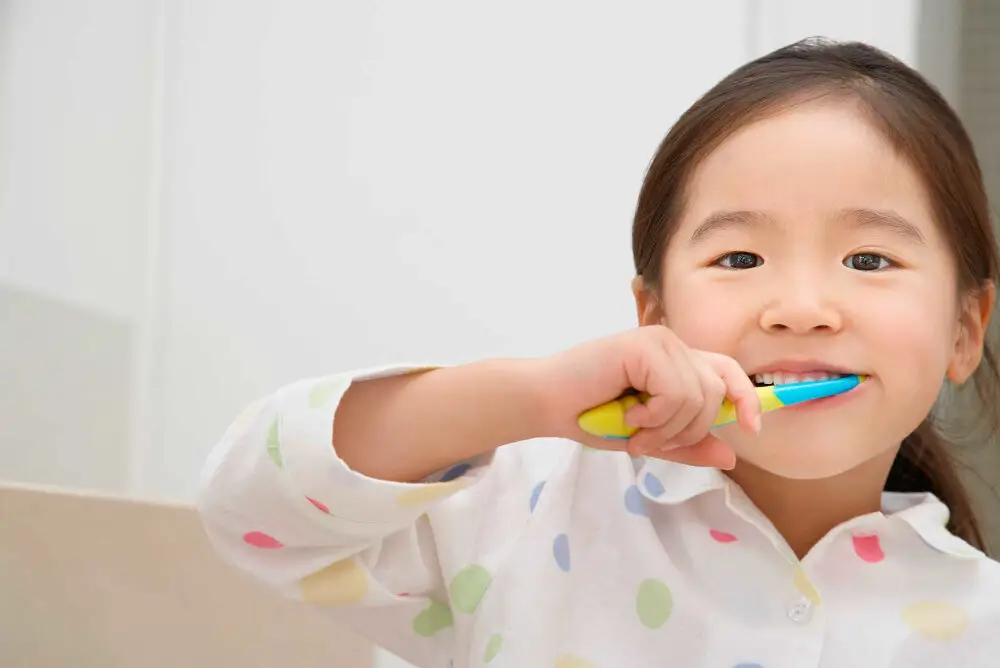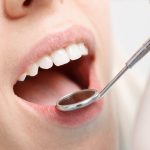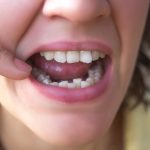Child Development: Exploring the Average Number of Teeth Children Lose and When

Child development is a fascinating subject that encompasses various aspects of growth and development in children. One of the most exciting aspects of child development is the loss of baby teeth and the emergence of adult teeth. Losing baby teeth is an important milestone in a child’s life, and parents often wonder when their child is likely to lose their first tooth and how many teeth they can expect to lose. Understanding the average number of teeth children lose and when can help parents prepare for this exciting time and ensure their child’s dental health is on track. The process of losing baby teeth and growing adult teeth is a natural part of the child development process. The average child will lose around 20 baby teeth between the ages of six and twelve years old. The timing of tooth loss can vary from child to child, but typically, the first baby tooth to be lost is one of the front teeth, which typically occurs around six or seven years old. As children grow, their adult teeth will begin to emerge, and they will have a full set of adult teeth by their early teenage years. Understanding this process and the typical timeline can help parents support their child’s dental health and ensure they are getting the care they need as their teeth transition from baby to adult teeth.
It is crucial to track a child’s development as it provides valuable insights into their growth and progress. With each milestone achieved, children gain new skills and abilities, and tracking these milestones can help parents and caregivers identify areas where a child may need additional support or intervention. In the case of tooth loss, tracking the timing and sequence of a child’s teeth can provide important information about their overall health, as well as potential dental issues that may need to be addressed. Additionally, tracking a child’s development can help parents and caregivers make informed decisions about their child’s education, healthcare, and overall well-being. By monitoring a child’s growth and development, parents and caregivers can ensure that they are providing the best possible care and support for their child’s future success.
Child development is a complex process that involves various stages and milestones, including the loss of baby teeth. This natural phenomenon occurs when children’s primary teeth start to loosen and fall out to make way for their permanent teeth. While the timing and sequence of tooth loss can vary from child to child, there are average ages and patterns that can help parents and caregivers understand what to expect. In this article, we will explore the average number of teeth children lose and when, as well as some factors that may affect the process. Understanding this aspect of child development can help ensure that children receive the proper dental care and support during this important transition.
Primary Teeth: A Closer Look

Primary teeth, also known as baby teeth, are the first set of teeth that children develop. These teeth usually start to appear between the ages of 6 months and 12 months. Children typically have 20 primary teeth, consisting of 10 upper teeth and 10 lower teeth. The primary teeth play an important role in a child’s development, as they help with proper chewing, speech development, and maintaining space for the permanent teeth to eventually grow in. It’s important to take good care of primary teeth, as they are susceptible to decay and cavities just like permanent teeth. Parents can help their children develop good oral hygiene habits by teaching them to brush their teeth twice a day and floss daily. Children should also have regular dental check-ups to ensure their teeth are developing properly and to identify any potential problems early on. By taking good care of primary teeth, children can pave the way for healthy permanent teeth and a lifetime of good oral health.
Primary teeth, also known as baby or deciduous teeth, are the first set of teeth that emerge in a child’s mouth. These teeth typically begin to erupt around six months of age and continue until around two or three years old, totaling 20 teeth. Primary teeth serve several vital functions, including allowing children to chew food properly and supporting the development of their speech. Additionally, they help maintain proper spacing and alignment for permanent teeth that will eventually replace them. Despite being temporary, primary teeth require proper care and maintenance to ensure healthy oral development and prevent cavities or other dental issues from arising.
The timeline for the development of primary teeth, also known as baby teeth, is a crucial aspect of a child’s growth and development. The process begins during prenatal development, where the formation of teeth buds occurs. The first primary tooth usually erupts at around 6 months of age, and by the age of 3, a child typically has a full set of 20 primary teeth. The shedding of primary teeth usually begins around the age of 6, and this process continues until the age of 12 or 13 when all permanent teeth have erupted. However, the timeline for the development of primary teeth can vary from child to child, and factors such as genetics, nutrition, and overall health can influence the process. It is important for parents and caregivers to monitor their child’s dental health and seek professional advice if necessary.
Primary teeth, also known as baby teeth, are the first set of teeth that children develop. These teeth typically begin to emerge between six and ten months of age, and by the time a child is three years old, they should have a full set of 20 primary teeth. These teeth are essential for a child’s development as they allow them to chew and speak properly, and they also play a crucial role in maintaining the proper spacing for the permanent teeth that will eventually replace them. However, primary teeth are not meant to last forever, and children will begin to lose them as they grow older.
The Process of Losing Primary Teeth

The process of losing primary teeth, also known as baby teeth, can be an exciting but sometimes uncomfortable experience for children. Typically, a child will begin to lose their primary teeth around the age of six, and the process will continue until they are around 12 years old. The first teeth to fall out are usually the lower front teeth, followed by the upper front teeth. As the child’s permanent teeth push their way up, the roots of the primary teeth dissolve, causing them to become loose and eventually fall out. While losing primary teeth is a natural part of growing up, it can be a bit uncomfortable for some children. As the teeth become loose, children may experience mild pain or discomfort. Some children may also experience bleeding or swelling around the gums as the new permanent teeth push their way in. It’s important for parents to reassure their children that this is a normal part of growing up and that the discomfort will subside once the new teeth have fully grown in. Encouraging good oral hygiene habits, such as regular brushing and flossing, can also help ensure that the child’s new permanent teeth grow in strong and healthy.
The process of losing primary teeth, also known as baby teeth, is a natural part of a child’s development. It typically begins around the age of six and continues until the age of twelve. As the permanent teeth begin to grow, they push against the roots of the primary teeth, causing them to gradually loosen and fall out. This process can be uncomfortable for some children, but it is important to allow the teeth to fall out naturally to avoid damaging the developing permanent teeth. The average child will lose 20 primary teeth, with the first ones typically being the two bottom front teeth, followed by the two top front teeth. It is important for parents to monitor their child’s oral health during this time and encourage good dental hygiene habits to promote the healthy development of their child’s permanent teeth.
The process of losing teeth is an exciting and memorable milestone for children, marking the transition from baby teeth to permanent teeth. On average, children usually start losing their teeth between the ages of five and seven, with the lower front teeth being the first to go. This process typically continues until around age 12, when all of the baby teeth have been replaced by permanent teeth. However, the exact timing and sequence of tooth loss can vary greatly from child to child. Some children may lose their teeth earlier or later than average, and the order of tooth loss may also differ. It is important for parents to monitor their child’s dental development and consult with a dentist if they have any concerns or questions.
As children grow and develop, they experience a variety of physical changes, including the loss of primary teeth. The average age for children to lose these teeth is between the ages of 6 and 12 years old. This process is a natural part of child development, as the roots of the primary teeth begin to dissolve, allowing the teeth to become loose and fall out. The order in which the teeth are lost can vary, but typically the front teeth are the first to go, followed by the molars. It’s important for parents to encourage good dental hygiene habits in their children to ensure the health of their developing teeth, as well as prepare them for the arrival of their permanent teeth.
As children grow, they inevitably lose their primary teeth, which are gradually replaced by their permanent counterparts. The process usually begins around the age of six and typically follows a predictable pattern. The first teeth to fall out are usually the lower central incisors, followed by the upper central incisors. Next, the lateral incisors are lost, followed by the first molars and then the canines. Finally, the second molars are shed, marking the end of the primary dentition phase. While this sequence is fairly consistent across most children, there can be some variation in the timing and order of tooth loss, depending on factors such as genetics, nutrition, and oral hygiene practices.
Factors That Affect Tooth Loss

Tooth loss is a natural process that occurs as we age. But, there are several factors that can impact the rate at which we lose teeth. One of the most significant factors that affect tooth loss is poor oral hygiene. Failure to brush and floss regularly can lead to tooth decay and gum disease, both of which can cause tooth loss. Additionally, consuming sugary foods and drinks can also contribute to tooth decay, which can ultimately lead to tooth loss. Poor oral hygiene habits can be particularly detrimental during childhood, as children are still developing good dental habits. Parents should encourage their children to brush and floss regularly and limit sugary snacks and drinks to help prevent tooth loss. Other factors that can affect tooth loss include genetics, medical conditions, and lifestyle habits. Certain medical conditions, such as diabetes and osteoporosis, can increase the risk of tooth loss. Lifestyle habits, such as smoking and heavy alcohol consumption, can also contribute to tooth loss. Additionally, injuries to the mouth and teeth can cause tooth loss, particularly among children who engage in contact sports or other physical activities. While some factors affecting tooth loss may be out of our control, it is important to maintain good oral hygiene and healthy lifestyle habits to help prevent tooth loss as much as possible.
There are various factors that can impact the timing of tooth loss in children. Genetics plays a crucial role in determining the rate of tooth development and eruption, which can influence when a child’s primary teeth fall out. Additionally, nutrition and overall health can impact the strength and durability of teeth, potentially leading to early tooth loss in children with poor diets or underlying health conditions. Trauma or injury to the mouth can also cause premature tooth loss, as can poor oral hygiene habits and an over-reliance on sugary foods and beverages. Finally, the age at which a child begins to lose teeth can be influenced by a variety of environmental factors, including stress, exposure to toxins, and socioeconomic status.
Genetics plays a significant role in the development of a child’s teeth. Tooth development is a complex process that involves the interaction of genetic and environmental factors. The genes responsible for tooth development can affect the number, size, shape, and eruption timing of teeth. Inherited conditions such as amelogenesis imperfecta and dentinogenesis imperfecta can lead to abnormal development of teeth. Additionally, variations in gene expression can affect the susceptibility of teeth to dental caries and periodontal disease. Understanding the genetic factors that influence tooth development can inform preventive and therapeutic strategies for maintaining optimal oral health.
Nutrition plays a crucial role in the development of a child’s teeth. A balanced diet rich in essential vitamins and minerals such as calcium, Vitamin D, and phosphorus promotes healthy teeth and gums. Foods such as milk, cheese, yogurt, leafy greens, and nuts are excellent sources of these nutrients. In addition, limiting sugary and acidic foods and drinks can help prevent tooth decay, which is one of the leading causes of tooth loss in children. Good oral hygiene practices, such as brushing and flossing regularly, also play a vital role in maintaining healthy teeth and preventing premature tooth loss. By encouraging a healthy and balanced diet and proper oral hygiene habits, parents can help ensure their children’s teeth develop properly and remain healthy throughout their lives.
Oral hygiene is essential for maintaining healthy teeth and gums. It involves daily habits such as brushing teeth twice a day, flossing, and using mouthwash to remove plaque and bacteria. Children should start practicing good oral hygiene habits as early as possible, including visiting a dentist regularly for checkups and cleanings. As children develop, they will begin to lose baby teeth, which usually starts around age 6. This process is a natural part of child development, and parents should encourage their children to keep up with their oral hygiene routine to ensure their adult teeth come in strong and healthy. Proper oral hygiene can also prevent common dental problems such as cavities and gum disease.
Caring for Children’s Teeth During This Time

Caring for children’s teeth during this time is of utmost importance as dental hygiene is directly linked to overall health. With the COVID-19 pandemic, it is essential to maintain good oral hygiene practices to avoid unnecessary visits to the dentist. Parents should encourage children to brush their teeth twice a day, floss regularly, and use a mouthwash to kill any germs or bacteria. It is also important to keep track of their diet and limit sugary and acidic foods and drinks that can cause tooth decay. Parents can also consider using fluoride toothpaste and dental sealants to protect their children’s teeth. Regular dental check-ups and cleanings are also necessary, and parents should consult with their dentist on how to keep their children’s teeth healthy during these times. It is crucial to teach children good oral hygiene practices from an early age to ensure that they continue to practice good dental habits throughout their lives. Parents can make brushing fun for children by using colorful toothbrushes and toothpaste, singing songs, and using timers to ensure they brush for the recommended two minutes. Children should also be educated on the importance of oral hygiene and how to take care of their teeth. Parents can set a good example by practicing good oral hygiene habits themselves and making dental check-ups a regular part of their family’s healthcare routine. By taking care of their children’s teeth during these times, parents can ensure that their children have healthy and strong teeth and avoid dental problems in the future.
Caring for children’s teeth during the primary tooth loss process is essential for maintaining healthy dental hygiene. Parents should encourage their children to brush their teeth twice a day using fluoride toothpaste and floss regularly to remove any food particles that may have been stuck between the teeth. They should also avoid giving their children sugary foods and drinks, especially before bedtime, as this can lead to tooth decay. Additionally, parents should schedule regular dental check-ups for their children to ensure that their teeth are healthy and to catch any potential problems early. By taking these steps, parents can help their children maintain healthy teeth and gums during the primary tooth loss process and beyond.
Regular dental checkups are crucial for maintaining good oral health in children. It is recommended that children visit the dentist every six months to ensure any dental problems are caught early on. During these checkups, the dentist can examine the child’s teeth and gums, check for cavities or other dental issues, and provide preventative care such as fluoride treatments or sealants. Regular dental checkups can also help to detect any underlying health issues that may be affecting the child’s oral health. In addition, these visits can help children develop healthy dental habits and encourage them to take responsibility for their own oral health. By prioritizing regular dental checkups, parents can help their children maintain a healthy smile for years to come.
Proper brushing and flossing are essential for maintaining healthy teeth and gums in children. Parents should encourage their children to brush their teeth twice a day for at least two minutes each time, using fluoride toothpaste and a soft-bristled toothbrush. It’s also important to floss once a day to remove any food particles and plaque that may be trapped between the teeth. Parents should supervise young children to ensure they are brushing and flossing correctly, and they should help them until they are old enough to do it on their own. Additionally, children should visit the dentist regularly for checkups and cleanings to prevent any dental problems from developing. By following these simple brushing and flossing tips, parents can help their children maintain healthy teeth and gums as they lose baby teeth and grow new ones.
In summary, the process of losing baby teeth and growing permanent teeth is a natural part of child development. On average, children will lose around 20 baby teeth between the ages of 6 and 12 years old. The order and timing of tooth loss can vary from child to child, but the front teeth are typically the first to go. It’s important for parents to encourage good dental hygiene habits and regular check-ups with a dentist to ensure healthy growth of permanent teeth. Additionally, if a child experiences delayed tooth loss or other dental concerns, seeking the advice of a dental professional can help identify any underlying issues and prevent future problems.
Monitoring and caring for children’s dental health is of utmost importance as it can have a significant impact on their overall health and well-being. Poor dental health can lead to a range of issues, including tooth decay, gum disease, and even systemic health problems such as heart disease and diabetes. Additionally, children who experience dental pain or discomfort may have difficulty eating and may not receive adequate nutrition, which can affect their growth and development. By ensuring that children receive proper dental care, parents can help prevent these issues and promote their children’s overall health and well-being. This includes regular dental check-ups, teaching good oral hygiene habits, and promoting a healthy diet that is low in sugary and acidic foods and drinks.
As parents and caregivers, it is important to understand the natural process of tooth loss in children and provide adequate dental care. Regular dental check-ups should be scheduled to ensure that the child’s teeth are healthy and developing properly. It is also important to encourage good dental hygiene practices, such as daily brushing and flossing, to prevent tooth decay and gum disease. Additionally, parents and caregivers should provide a healthy diet that is low in sugar and high in calcium to promote strong teeth and bones. By taking these steps, parents and caregivers can ensure that their child’s teeth develop properly and maintain good oral health throughout their life.
Conclusion

In conclusion, understanding the average number of teeth that children lose and when is a fundamental aspect of child development. The process of losing teeth is a natural and necessary part of growing up, and it allows children to develop proper oral hygiene habits and maintain healthy teeth and gums. By tracking this process, parents and caregivers can ensure that children are receiving the necessary dental care and attention they need to grow up strong and healthy. Additionally, knowing when to expect tooth loss can help alleviate any concerns or anxieties that children may have about the process. Overall, understanding the average number of teeth children lose and when is crucial for promoting healthy child development and ensuring that children are set up for a lifetime of good oral health.







